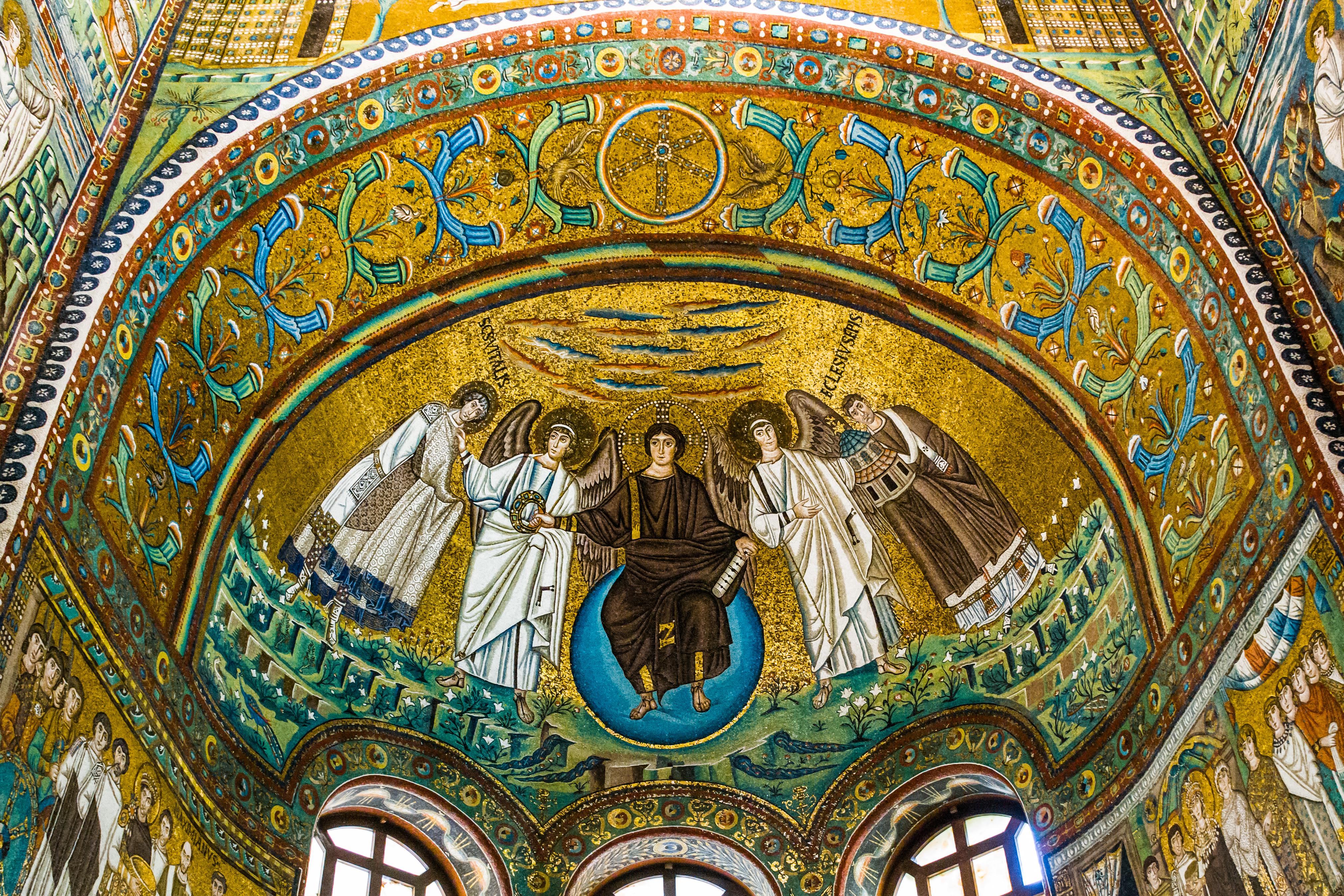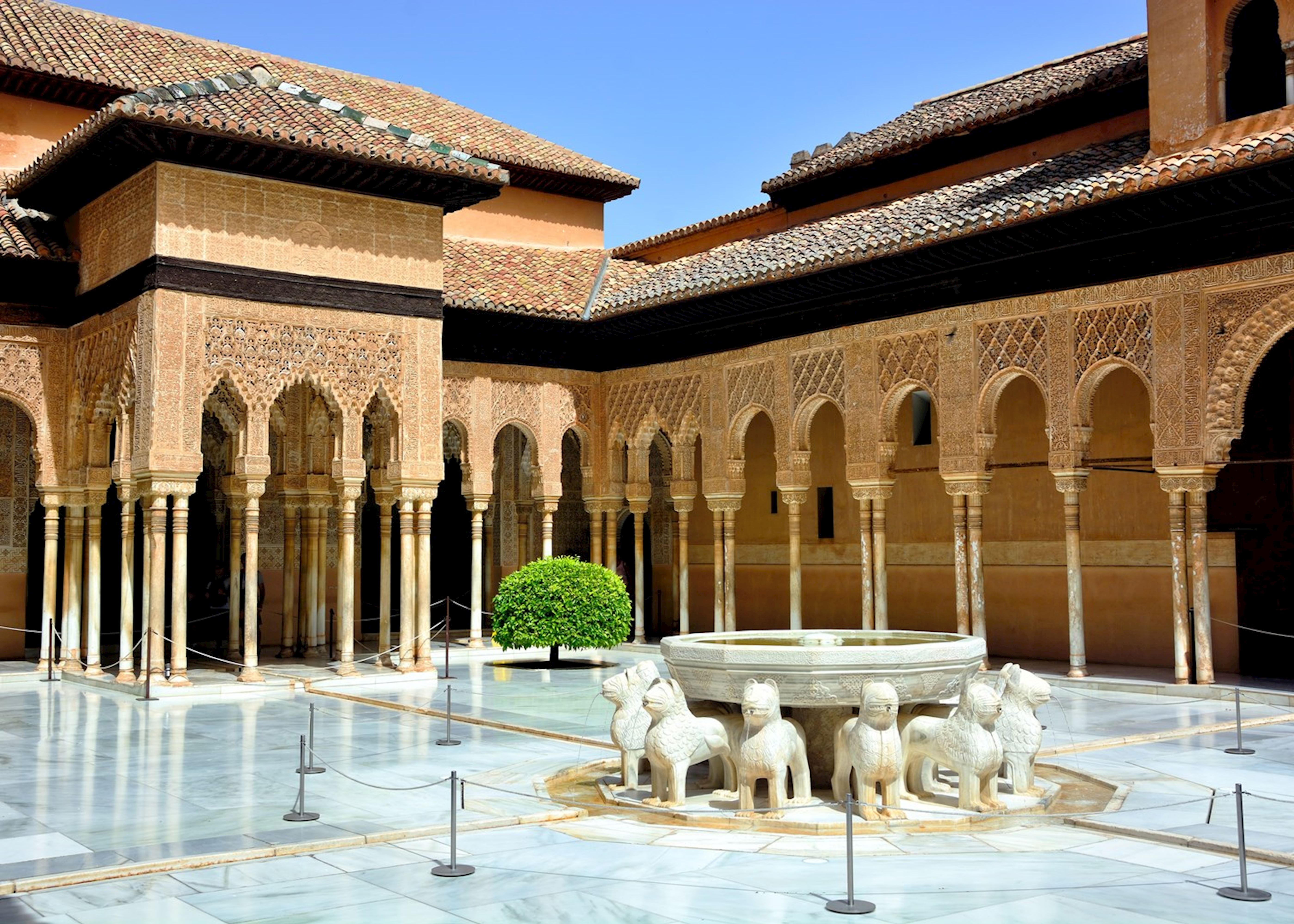byzantine and islamic art
1/22
There's no tags or description
Looks like no tags are added yet.
Name | Mastery | Learn | Test | Matching | Spaced |
|---|
No study sessions yet.
23 Terms
what was the political structure in the western roman empire during the byzantium era?
collapsed with the fall of Rome in 476
fragmented into smalled kingdoms
weak central authority, reliant on local lords and the Catholic Church
what was the political structure of the eastern roman empire aka the Byzantine empire like?
strong central authority under the emperor
bureaucratic administration
stable political system
how was religion regarded in both the western and eastern roman empires and how did they differ?
western
roman catholic church was dominant
pope was significant religiously and politically
eastern
eastern orthodox christianity
close rs between the emperor and the patriarch of constantionple
what were the differences between the economy of the western and eastern roman empire?
western
economically weaker after the fall of rome → decline in trade and urbanisation
agricultural based with feudal obligations
eastern
wealthier and more urbanised due to strategic location
flourishing trade networks between europe, asia (constantionopole) and the middle east

describe the Hagia Sophia (construction)
40 windows at the dome’s base, creating an illusion that the dome rests on light
illumination and the setting for the solemn liturgy of the eastern christian orthodox faith
massive dome made from 5 separate pieces from bottom to top
central dome over square plan
grandiosity to welcome official ceremonies
airness and luminosity
combination of Hellenistic and Roman architectural and decorative heritage, with Asia Minor’s use of vaulted spaces and dome
why were icons important in byzantium?
icons of worship
were a personal, intimate and indispensible medium for spiritual transaction with holy figures
believers ascribed miracles and healing powers
why was there a conflict about icons in byzantium?
educated believers considered it a form of idolatry
8th century: imperial ban on sacred images, destroying existing icons → series of defeats against Arabs belief
iconography won the battle and monstaries such as Mount Athos became a major factor in economic life
what was the purpose of Mosaics in the byzantine era?
provided inexpensive and durable flooring
greeks invented the terrerae technique for mosaicists to have more flexibility, size and shape
gold and silver glass: bg / coloured glass: clothes / stones: faces, hands
caught the light flooding through the windows, producing sharp contrasts and concentrations of colour
what was the hagia sophia originally built to be?
eastern orthodox chirstian church

what type of columns were found at the Hagia Sophia?
composite and ionic
what changes did the Hagia Sophia go through?
1202-1204: On the order of the Pope, the Forth Crusade commenced, leading to the fall of Constantinopole. It was sacked and designated as a Roman Catholic Cathedral.
1261: Byzantine empire ousted the Latins, returning it back into an Eastern Orthodox Church
1453: Ottoman Empire took Constantinopole, Mehmed ii turned it into a Mosque + added Islamic symbols. Other changes included plastering mosaics, adding Minarets and a Mihrab

what are the key features of the Basilica of San Vitale?
combination of roman elements (dome, towers) with Byzantian and oriental elements (narrow bricks, narthex, elaborated capitals)
composed and harmonious outdoor structure
houses the mosaics of san vitale

What was the purpose of the mosaics of san vitale?
covering the walls and domes → showing wealth
colourful and exquisite finesse
symmetrical disposition
firm, hieratic and imposing figures seem to transcend the limits of a deadly and common humanity
state the features of islamic architecture
combination and synthesis of christian and byzantine art
usually low-rise buildings, harmonious architecture
the interior is typically richly decorated VS exterior is typically simple (inside more important)
no humanoid figures; has geometrical, calligraphy, flowy designs of flowers and plants
ribbed vaults that dont cross in the middle
mosque’s are typically rectangular with an open court and fountain in the center for purification
arabic calligraphy everywhere

what is the significance of the Dome of the Rock?
not a mosque, but a sacred muslim shrine for pilgrims
built over a sacred stone where the Prophet Muhammad ascended into Heaven before returning home to the Mecca
mathematical rhythm of its proportions
octagonal plan and mosaics: Byzantine influence

describe the interior of the dome of the rock.
mosaics feature both realitics and stylised representation of vegetation, referencing the gardens of paradise
rich jewellery depicted in abundance, including breastplates, necklaces and a persian crown with features gathered at the base
corinthian-style marble columns, byzantium inspired
voussoirs: wedged-shaped stones that make up the arches
the ceiling of the dome was built with crisscrossing ribs that create pointed arches, covered with a gold mosaic in radial pattern
what is a mihrab?
identify the wall that faces the mecca
usually framed by a decorated arch with gold tesserae with a combination of dark blues, reddish browns, yellows and golds to form intricate calligraphy bands and vegetal motifs
what are minarets?
4 minarets is typical
used to give the muslim call to prayer

what are the features of the hypostyle prayer hall?
arcaded hypostyle hall made with jasper, onyx, marble and granite
repeated geometry; fluid, almost mystical space
double arches was a new introduction to architecture: high ceiling with low columns
2-tiered arches with Muslim horseshoe shape that create a light and airy interior
the contrasting stripes of the voussoirs enhances the interior
the hall was made of recycled ancient roman columns from the Janus temple and other destroyed roman buildings

what are the features of the Alhambbra Palace?
architectural function obscured by decoration; the intricate patterns seem to dissolve material substance
sophisticated decoration, very refined and rich
built up in layers that are cut away (stalactite effect)
surfaces overed by a variety of complex geometric patterns
ornament is profuse, controlled by symmetry and repeated rhythms
calligraphic designs, writings, flora patterns and purely abstract linear elements
contains the muqarnas dome
muqarnas (stalacite-like prismatic forms covering the ceiling) → catch and reflect sunlight to create the effect of a starry sky
dome of heaven
contains the court of lions
Moorish style
12 marble lions (rare in islamic art) throw jets of water while carrying a water basin on their backs
emphasis on decorative surfaces of inscriptions and stylised vegetal forms
subic capitals and multilobed pointed arches and carved stucco walls
extreme sophistication with surfaces ornamented with interwoven abstract motifs and Arabic writing
what is the significance of St. Mark’s Basilica?
St mark was prophesized to have his final resting place here
Venetian merchants stole relics from St mark from Alexandria, Egypt
prophecy affirms Venice’s divine right of possession of relics
looting of religious relics; the Venetian claim that St Mark’s body belongs in venice raises ethical concerns surrounding cultural appropriation vs divine destiny
how did the style of mosaics change over time?
artists like Titian would compete for work in the church, often under the pretense of replacing the old mosaics with Renaissance and Mannerist ones
italian renaissance perceived modern mosaics to be artistically superior; making little attempt to stylistically integrate the new compositions to the old ones
flat, frontal figures (byzantium conventions) → perspective, anatomical occurence and movement
how did the style of sculptures change over time?
started to have more naturalistic proportions